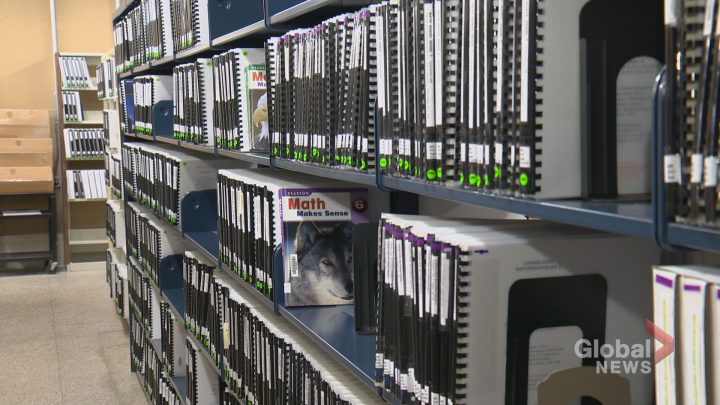Sitting in the Confederation Park School library, Xavier Stonechild-Dorward reads his Maze Runner: The Scorch Trials book out loud – gently moving his fingertips across the braille pages.

The 13-year-old is visually impaired. He started learning how to read braille when he was seven.
“I have a braille bible that’s at my place and then I have the hunger games,” he said, describing his collection of books.
“I was able to get passed the beginner braille code, then I moved here and I started all the contractions,” he explained.
When Xavier moved to Saskatoon three years ago, he quickly became familiar with the Saskatchewan Alternate Format Materials Library (SAFM).
“I’ve been there four times,” he exclaimed. “It’s great to have in the city.”

Get breaking National news
Xavier is one of about 250 students in the province from kindergarten to Grade 12 with perceptual disabilities.
They get their reading materials from SAFM, which houses almost 4,000 titles.
“Braille, e-text, audio, and large print,” SAFM collection developer Sarah Moloney explained. “There’s curriculum materials for science, math, social studies – all of their core subjects – as well as pleasure reading materials.”
“They wouldn’t be able to learn if they didn’t have access.”
In 2010, Unified English Braille (UEB) was adopted in Canada, meaning all English-speaking countries were using the same universal braille code.
It also meant the library’s collection was no longer valid.
“We have been trying since then to acquire new UEB materials,” Moloney said. “Most of our operating budget goes into curriculum resources.”
Moloney said a braille textbook can cost up to $45,000. A novel – up to $5,000.
“If a student wants a book and they want it in braille – it has to be sent out to be transcribed,” she explained.
Operated by the Saskatoon Public School Division, the library is funded by the Ministry of Education.
Thanks to a $12,000 grant from the Canada Post Community Foundation, the SAFM will be able to add to its collection – specifically, getting more pleasure reading materials.
“There’s no substitute for the ability to read, and for a visually impaired student that’s braille,” Moloney said.
It’s something Xavier is thankful for.
“Not all kids get the stuff that I get,” he said.



Comments